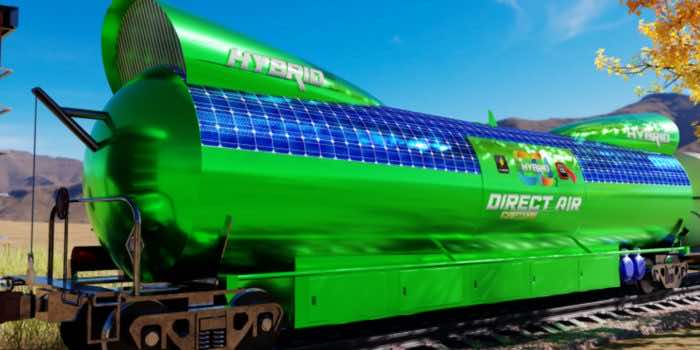CO2 Rail, a U.S.-based train startup has brought modified train cars that crisscross across the country, not needing facilities to take out carbon from the air, a press release said.
The captured carbon can then be utilized for other purposes such as making pharmaceutical ingredients or simply compressed and sequestered under the Earth.
Researchers at CO2 rail, along with the University of Toronto, have developed a new method that can make use of the existing rail network and capture carbon from the atmosphere while passenger and freight trains make their usual rounds.

The researchers plan to use purpose-built train cars equipped with large vents to take in the air. It will eliminate the need for fans usually deployed by stationary direct carbon capture systems, saving significant amounts of energy.
“Every twelve hours at crew change or fueling stops, the onboard CO2 reservoir is emptied into a normal CO2 tank car located at that station,” said E.Bachman, the founder of CO2 Rail, in an email exchange with Interesting Engineering. “When a sufficiently large group of these tank cars have been filled, a train will be made and perhaps as much as 10,000 tons of captured CO2 will be shipped into the circular carbon economy as a value-added feedstock or directly by rail to geological sequestration sites. This should not be challenging at all as the CO2Rail cars were designed for approximately 24 hours of continuous operation before needing to be unloaded and engineers need to rotate approximately every 8 hours.”
“Every complete braking maneuver generates enough energy to power 20 average homes for a day,” said Bachman,” So we’re not talking about a trivial amount of energy.”

By using a regenerative braking system, trains can convert this into electrical energy, which can then be used to power the direct carbon capture process. The researchers estimate that an average freight train could remove about 6,613 tons (6,000 tons) of carbon dioxide every year.
Using the rail system could also deliver additional benefits like freedom from zoning and building permits that are needed for large-scale capture methods.
The researchers have published their work in the journal Joule.


